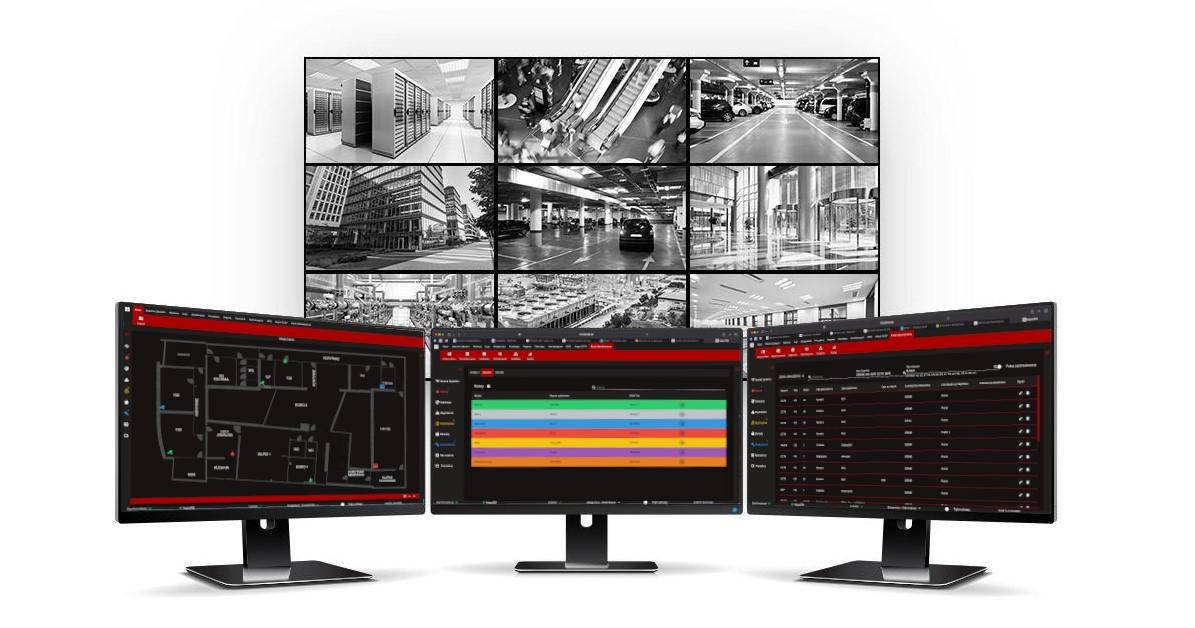
of proprietary software
of integrated systems
with an integrated
anti-drone
system
ARGUS 2.0 is the latest release of the ARGUS-group PSIM-class software. It is used for managing facility security through surveillance and controlling integrated technical security systems. ARGUS 2.0 is equipped with a UAV (unmanned aerial vehicles) detection and neutralization module – a so-called anti-drone system.
The platform collects, processes and displays data on request. The data is acquired from numerous devices being part of the following systems: IDS, VSS (CCTV), ACS, FAS, BMS or SCADA. All data is presented on multi-level maps of a graphic user interface. The status of each of the elements are stored in a database along with a log. Argus 2.0 processes information that are simultaneously transmitted from technical security systems, providing rapid operation.
The ARGUS 2.0 software platform is fully made in Poland.

Owing to its hierarchy-based structure, the ARGUS 2.0 system is an optimal solution for security management hubs, which monitor technical security systems of numerous facilities scattered over vast areas.
It enables managing the security of smaller and individual facilities (site and buildings). It is also a perfect solution to secure small- and medium-sized enterprises that value security and simplicity of technical security system management.
The ARGUS 2.0 software fully complies with the requirements of the Defence Standard NO 04-A004:2016 (alarm systems), hence, it may be applied for integrating the technical security systems of military facilities.
The ARGUS 2.0 includes a novel graphics interface, which is characterized by enhanced ergonomics. The application is distinguished by a dark colour theme, which significantly improves work comfort.
Simplified system management can be implemented fully by an administrator. Upon the system detecting a threat, its operator is notified via a relevant log entry, sound signal and map indication.
The automatic procedures that intuitively guide the operator through pre-programmed steps are extremely important for the correct handling of alarm events. Following procedures ensures correct operation actions even in exceptionally stressful situations.
The system was created based on modules that enable free user-specific activation. In addition, each operator can be assigned a set of signals to monitor. The supervision over the entire TSS (technical security system) can be divided by type, each of which can be assigned to one of the operator or divided by location, e.g., into areas.
The ARGUS 2.0 app was developed fully by Polish engineers using Microsoft ASP.NET Core. The application of such a technology enabled developing a multi-platform application that can be used both via an Internet browser and a desktop app.
Desktop or browser-based applications look identical, therefore there are no discrepancies in controlling and managing them.
The Microsoft ASP.NET Core technology guarantees high data transmission security and protection against their loss. It enables immediate operation in response to a threat.
The system operates based on the PostgreSQL database, which enables launching high-availability mechanisms. ARGUS 2.0 offers automatic mechanisms activated in the event of a communication loss or failure. The mechanisms are fully scalable – they enable adding subsequent databases and a server to improve system security against failures.
The applied database redundancy mechanisms mean that upon loss of communication with the central server, the system switches to one of the backup servers.
The ARGUS 2.0 app can run on both a virtual machine or an actual server. ARGUS is based on the client-server structure, and the entire application is divided into an ARGUS 2.0 application server launched as a server-based service and a client that can be installed on: Windows, Linux and macOS, as a desktop or browser application.
Data is stored centrally in the server app and can be provided to the client on demand.
It is impossible to act as ARGUS 2.0 software, because the data is sent to pre-authorized stations with a communication token.
Deploying the ARGUS PSIM v2.0 integrating software enables expanding integrated technical security systems with new devices, such as power generators, network switches, interface hubs or other independent devices, such as body temperature cameras.
The deployment also enables expansion with additional security systems, facilities and more users operating the system.
ARGUS 2.0 system
module
The ARGUS CCTV module offers advanced control over CCTV camera signals. They are controlled directly via a user interface.
It also enables, among other things, displaying images on numerous screens, tracking alarm situations, replaying events or creating backups.
ARGUS PSIM v2.0 offers such features as:
- multi-factor system log in,
- graphic status display of integrated systems and equipment,
- multi-level vector graphics,
- system and facility event log,
- graphs,
- schedules,
- procedures,
- calendars,
- icon status,
- administrator and operator panels,
- modularity,
- UAV detection and neutralization module (anti-drone module),
- VSS/CCTV stream display (CCTV module).
CAPABILITIES OF INDIVIDUAL ARGUS 2.0 SOFTWARE FUNCTIONS

- UAV detection
and neutralization system
- Owing to full integration of the anti-drone system with the PSIM-class ARGUS platform, the operator can simultaneously use one system integrating also other security systems operating within a facility, such as access control, fire alarm system, CCTV or the intrusion detection with perimeter security.
- The anti-drone system module within the ARGUS platform is based on a graphical background in the form of a vector map. The map displays all system elements in accordance with geographical coordinates.
- The system may include, depending on facility type and class, short- and long-range radars, various-frequency RF detectors, acoustic sensors, camera assemblies on precise swivel plates, and jamming devices.
- The camera assembly may include visible light cameras and thermal imaging cameras, cooled or uncooled.
- The software combines all signals from individual system components and then visualizes a UAV (drone) on the map.
- Each visualized unmanned aerial vehicle is assigned such parameters as communication protocol, latitude and longitude, flight altitude and flight speed. The map also display an object motion trajectory.
- The system offers preliminary, automatic object selection, which enables eliminating unwanted flying objects detected by the system (birds, airplanes).
- The system also enables creating many protection zones – from the most remote, informing that an aircraft is moving in the vicinity of the protected area, to closest, where object security is threatened – in such a situation, the system may respond automatically by activating radio wave jamming over selected frequencies or GPS/GLONASS, or the system operator may manually trigger jamming. The system enables activating and deactivating individual jamming bands. In addition, it can also track a flying object using a long-range camera.
- All proof of illegal air patrolling of the facility are recorded in an event log and, following an analysis, saved on a hard-drive and stored for a specified period of time. Recorded footage and object trajectory may be replayed on demand.
- The ARGUS CONTROL MB-POE-1000 module is the basic element of the ICT box or cabinet monitoring system. Its compact size enables its installation in any cabinet or box.
- It utilizes the REST API protocol to communicate with the integrating system, e.g.: ARGUS 2.0 or ARGUS RV.
- It boasts a built-in browser platform, which enables remote equipment status preview and configuration.
- Equipped with an RS485 bus, it enables expanding the features with new modules.
- It can be powered using a POE or an external 48 VDC power supply.
- The device is fitted with 8 parametrized ports that enable connecting a PIR sensor or reed relays. In addition, it has two relays that allow remote presence of any device.
- The device is also equipped with a 1-wire communication port for tieing-in a temperature and humidity sensor, e.g., DHT22. It can also power peripheral equipment using a 12 VDC outlet.
ARGUS RV is the previous version of our high-performance PSIM-class system for integrating technical security systems for large and scattered facilities.
Since 2000, in cooperation with Mikronika, the system has been under development based on the SYNDIS RV hardware-software platform.





